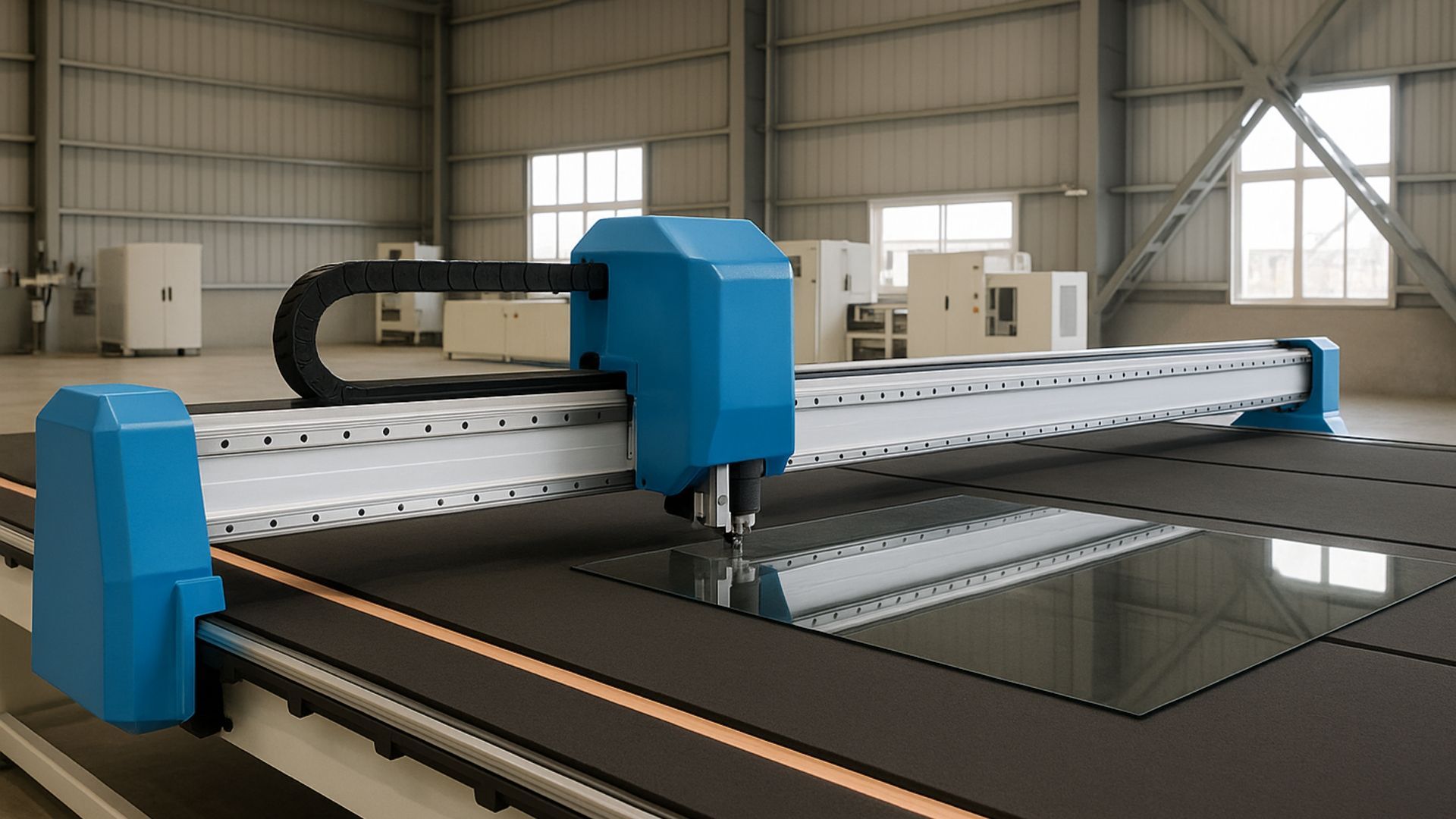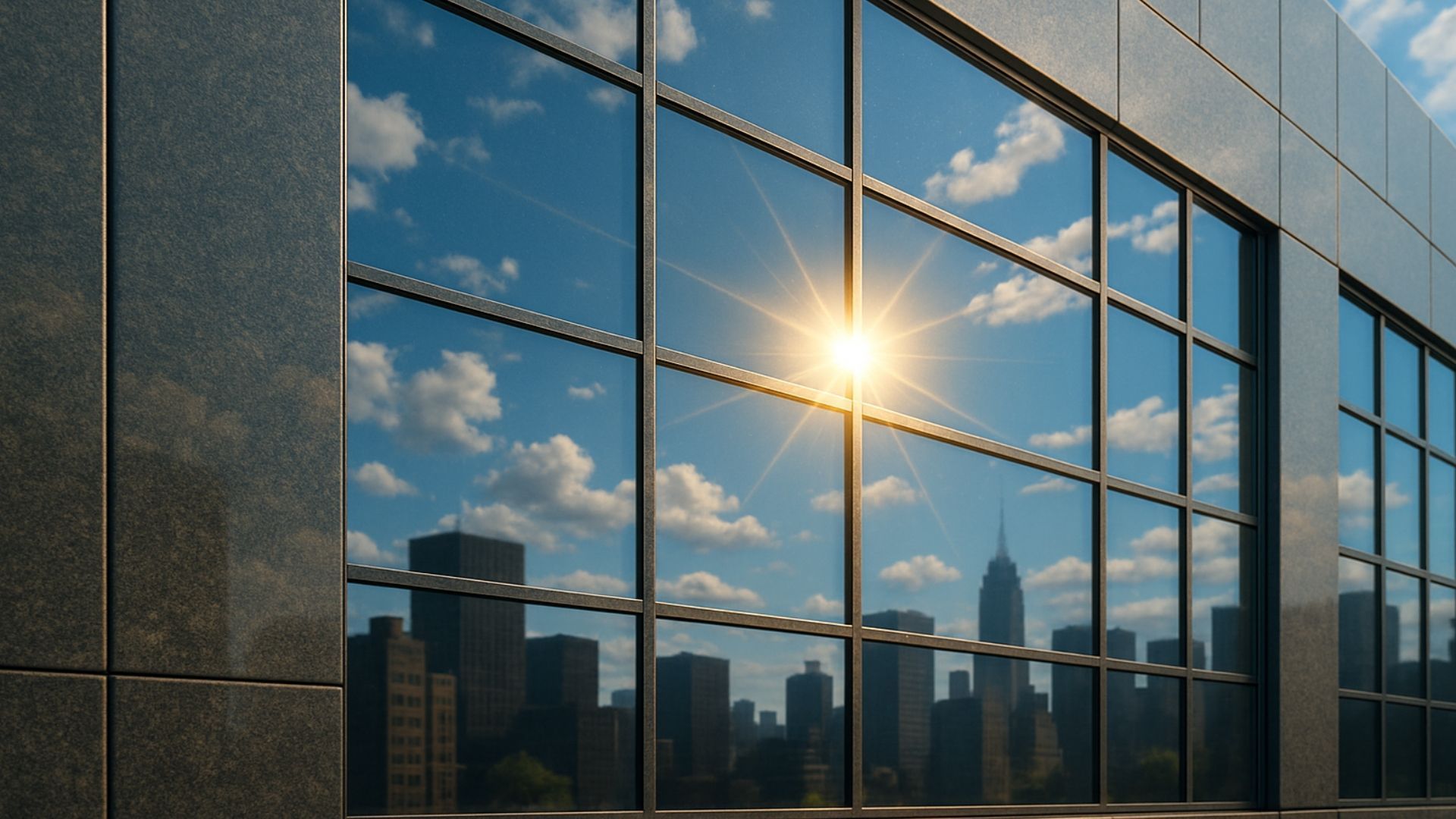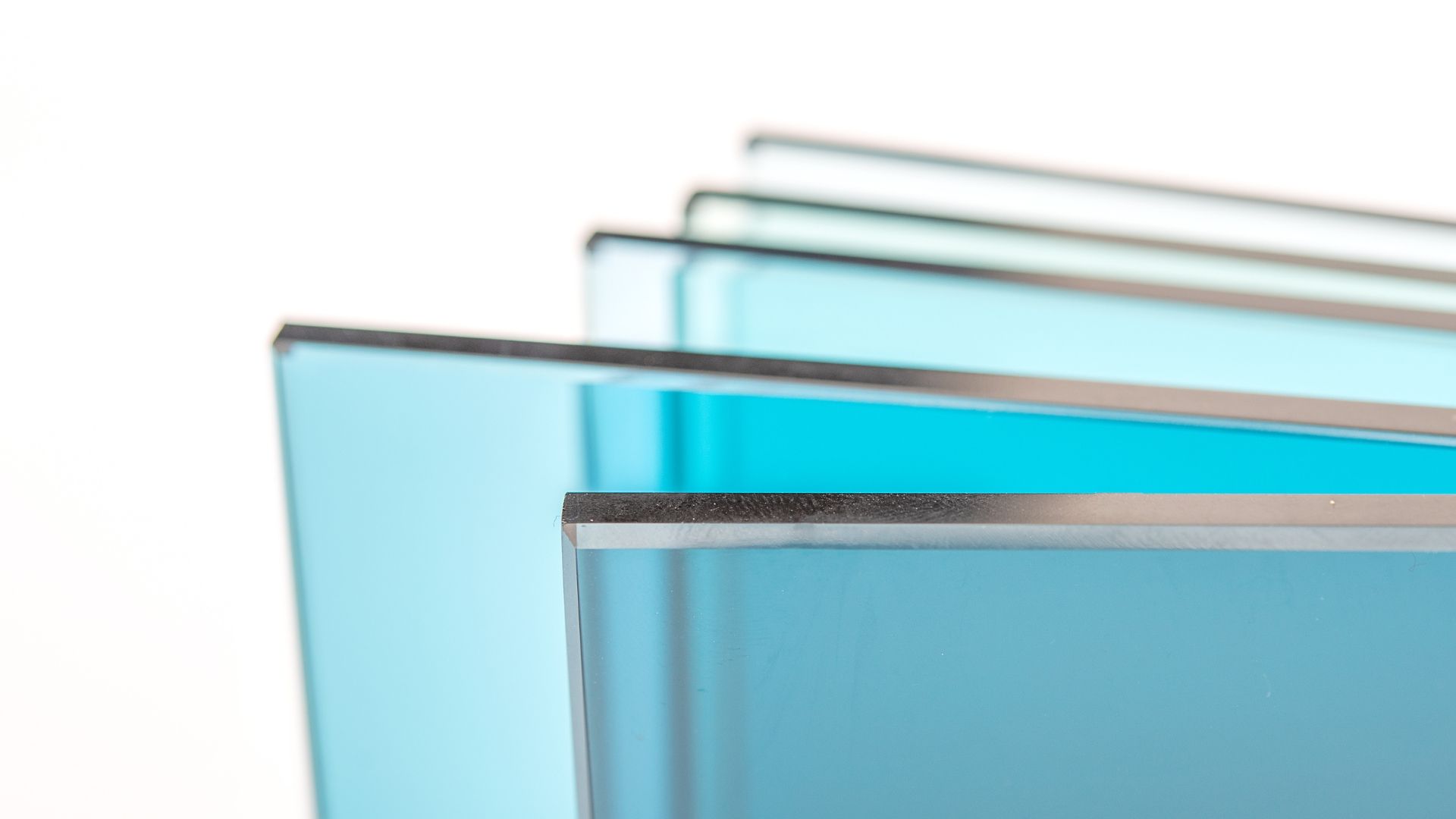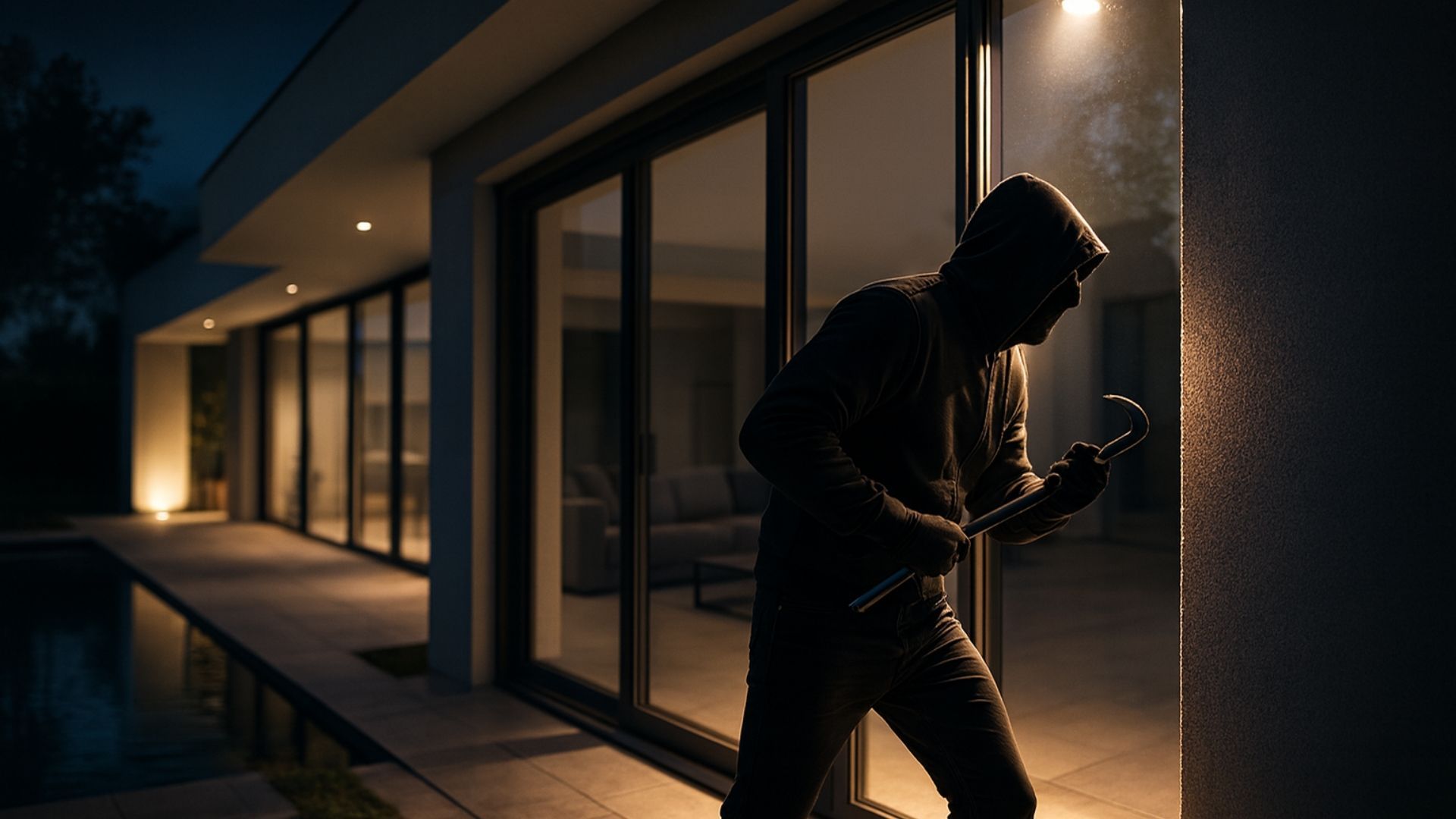How to use switchable glass as a projection screen
Share this blog:
Want to combine the elegance of glass with the utility of a projection screen? Switchable glass is the answer.
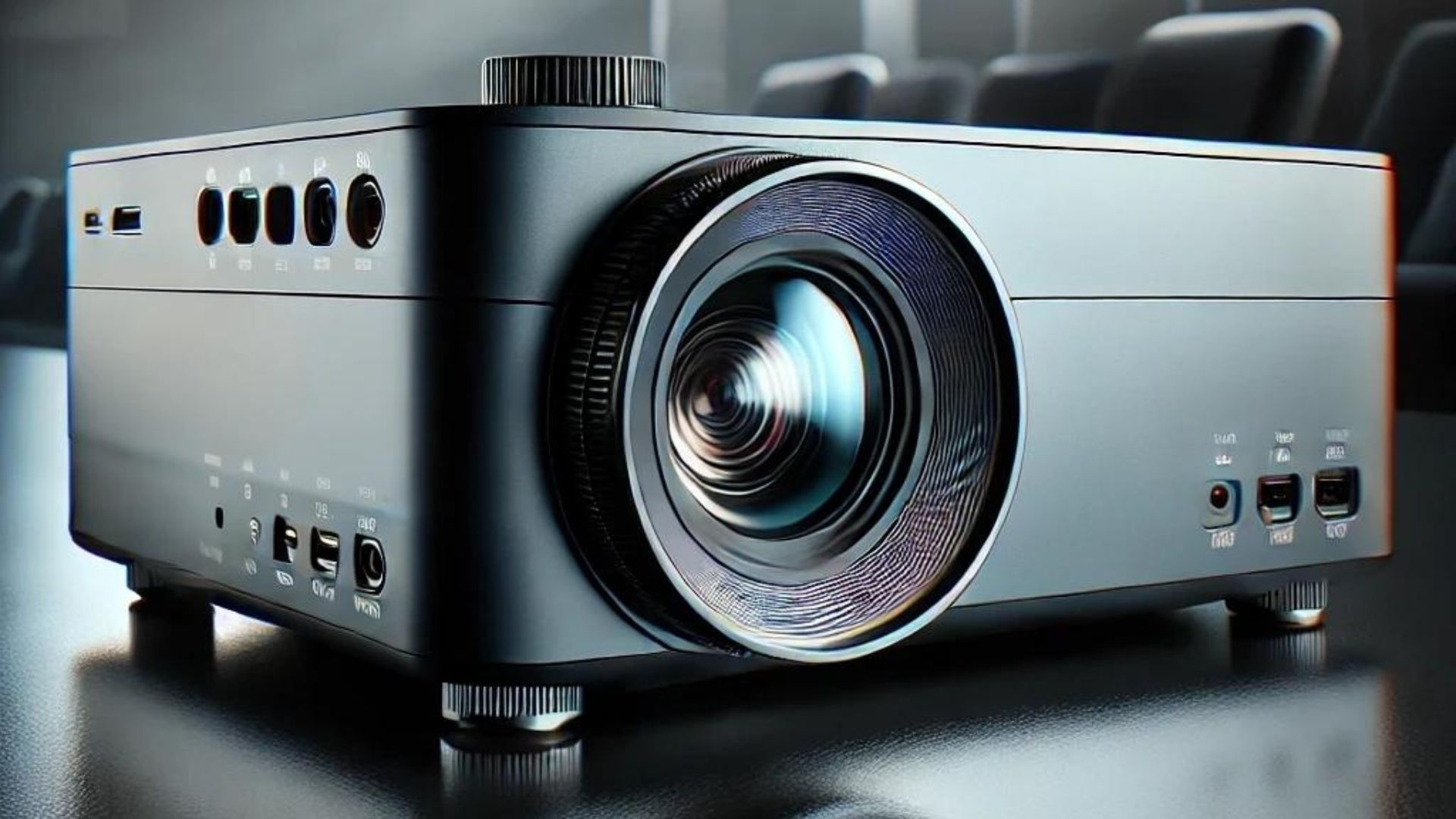
Picture the scene. You're getting ready for a meeting at an office. As part of the meeting, you need to project slides and video content.
You walk into the office and are immediately struck by the space. There's glass
everywhere. It's a gleaming, elegant expanse of see-through windows, doors, partitions – even the signage is made of glass, with words and logos printed on digitally.
The meeting is to be held in the boardroom – which, naturally, is made of glass. You sit down on the glass chair and place your laptop on the glass table.
It's then you realise that there's going to be an issue. All the walls are transparent, meaning there's no surface on which you can project your presentation.
As the team huddles around your laptop, you reflect that no matter how aesthetically appealing an office filled with glass can be, it sure would help you to have a working projection screen.
It's a problem that should matter to office managers for a couple of reasons. First, it introduces an unnecessary logistical difficulty. Second, it sends a message to visitors that looks are more important than functionalities.
Wouldn't it be great if you could combine the best of both worlds? Well, you can. All you need is switchable glass.
What is switchable glass?
Switchable glass – or smart glass – is a type of glass that can be switched on and off with a button. In less than a second, you can change the glass from transparent to tinted to opaque.
Sounds niche? It's used more than you might expect. You can find switchable glass in medical facilities, hotel bathrooms and even changing rooms in clothes stores – essentially, any location where users need privacy on demand.
But it can also be used as a projection screen. Once the glass has turned opaque, you can project images and videos onto it.
Going back to our boardroom scenario, you can see why this would add value. You get the corporate minimalist elegance of wall-to-wall glass without sacrificing functionality.
What's more, this functionality is seamless. A simple click of a button on your smartphone or other smart device turns the glass opaque. Another click and you're projecting images and videos onto the wall. It's a display of futuristic flair that's bound to impress visitors.
This seamlessness is nothing to be sniffed at. After all, the aesthetics and functionality of an office space are paramount in making a good impression on clients and other visitors. It tells them you're forward-looking yet practical – the very model of a modern businessperson.
But that's just one use case for switchable glass. It also unlocks fresh opportunities for creative marketing.
Switchable glass in advertising
Switchable glass isn't only used in office spaces – it can also add value to shopfronts. Being able to draw the digital blinds at the click of a button means enhanced privacy – and it tells shoppers that your stock is as up-to-the-minute as your facade.
But as in the office, switchable glass on a shopfront can double up as a projection screen.
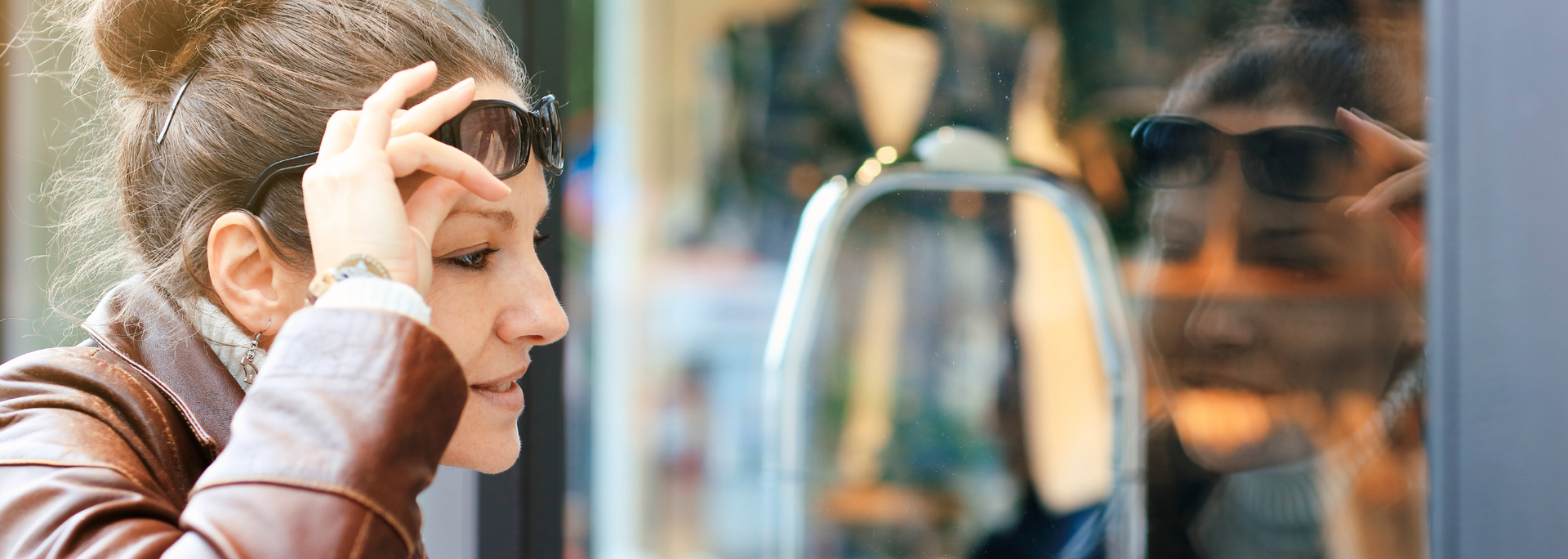
"Hold on," you might be thinking, "where does the projector go? Surely you can't set up a projector on the other side of the road?"
The answer is "rear projection". This is where the projector sits in the shop behind the screen. When the glass is set to privacy mode, the projector can then display ads.
Your instinct might be that this is pretty cool but pretty gimmicky. In fact, it's a great way to attract customers, increase footfall and boost sales.
After all, the high street is a crowded place, with brands jostling for attention at every turn. At times, a stroll down the high street can feel like being yelled at by dozens of salespeople at once. In this modern-day bazaar, how can you ensure that your messaging is cutting through?
Rear projection on a switchable glass shopfront is one answer to this conundrum. It's stylish and eye-grabbing without being aggressive or crass.
It also provides a talking point for customers and journalists alike. In a saturated market, it allows your brand to cut through the noise and make an impact.
Not only that – it's surprisingly low-maintenance. You can programme your projector to cycle through ads, then step back and get on with the rest of your day. And when it comes to cleaning, it couldn't be simpler – just wipe the glass with liquid soap and a microfibre cloth.
Other uses for switchable glass as a projection screen
Think of any context where you use switchable glass and you can easily turn it into a projection screen – be it a glass fence, ceiling or set of patio doors, to name just a few examples.
Want to hold a screen filming in a unique environment? Switchable glass can make it happen. Want to display information on the walls of a changing room? You've got it.
When it comes to switchable glass, the only limit is your imagination – and as more and more companies get involved, opportunities will increase as costs go down.
About TG SWITCH
Here at ToughGlaze, we have our own range of smart glass that we call
TG SWITCH. With its advanced third-generation NPRLC film and water-resistant interlayer, it's perfect for commercial and domestic settings alike.
With smart glass, seamlessness is the point. That's why you can integrate TG SWITCH with smart home systems like Alexa or control it with our user-friendly smartphone app. A click of a button is all it takes to get going – no fiddling around with tech as your visitors twiddle their thumbs.
And like all our products, TG SWITCH can be cut into any shape you like for framed and frameless applications.
So what are you waiting for?
Get in touch with ToughGlaze today for a quick, competitive quote on switchable glass that can increase privacy and take your brand aesthetic to the next level.
